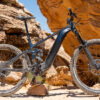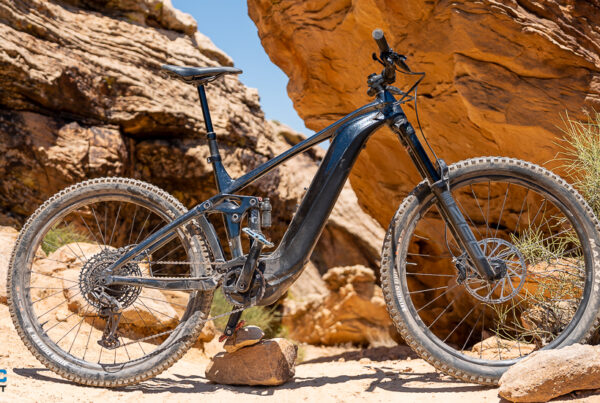Despite some changes made to the motor, the Himiway Zebra’s power delivery feels much the same as its predecessor, the Himiway Cruiser.
The power is the same type of you-better-hang-on-tight snappiness we came to expect from the Cruiser, which many Himiway fans are going to see as a positive, but its motor and power delivery also features some of the same complaints we had with that original bike. The motor engagement when pedaling can be erratic and our team of testers all agree this e-bike feels like it was designed more for throttling than pedaling which, depending on your preferred mode of motion, can be a good thing or a bad thing. But all in, the Zebra fits the bill of e-bike Himiway customers have grown to expect: it’s fast, torquey and you can ride for a long time on a single charge.
Like all other Himiways we’ve reviewed, the Zebra is a Class 3 e-bike with a throttle that’ll work until 20 mph and pedal assistance that cuts out at 28 mph, though we didn’t see speeds much higher than 25 mph on flat ground. And like all the new Himiway’s released at the end of last year, the company says the Zebra sports a torque sensor that’s supposed to make the motor quicker engaging and more responsive to how hard a rider is pedaling.
We saw evidence of the improvements the torque sensor is supposed to offer in our testing, mostly in how quick the motor engages (almost immediately), but it doesn’t always behave how we’d expect a torque sensor to. For example, we could soft pedal the bike and the motor would still go full bore, which is more typical of how a cadence sensor functions. Torque sensors engage the motor based on how much torque a rider’s pedaling is creating, so if you’re soft pedaling and thus not creating much torque, the motor shouldn’t be making much power. A cadence sensor, which the old Cruiser was equipped with, functions like an on/off switch that engages the motor based on if you’re pedaling or not. Himiway assures us the Zebra comes with a torque sensor, so we’ll take their word for it, but it does behave a little differently than we’d typically expect.
To get a feel for how the Zebra performs in each of its five PAS levels, we did put it to the test on our Electric Bike Report test circuit, where it performed well. We saw an average top speed around our one mile circuit of 21.8 mph and each of the five PAS levels yielded a nice and consistent change of speed ranging from 2 mph to 2.5 mph. This is in contrast to the Himiway Cobra we reviewed not long ago, which had almost no discernable difference in PAS levels.
I’d be very curious to see how this bike would perform in our circuit testing had the gearing been appropriate. Remember, this bike’s very small 36t front chainring makes for a large gear ratio that doesn’t really do much over 15 mph. So by the PAS 3 lap, I wasn’t able to help the motor around our circuit without pedaling uncomfortably fast. By PAS 4, all I could do was spin the cranks to make sure the motor stayed engaged. With a bigger chainring, maybe a 46t or slightly larger, I’d wager we’d see quicker laps from the Zebra.
Source link








